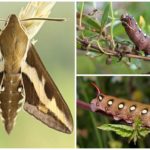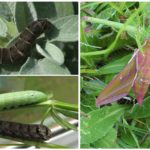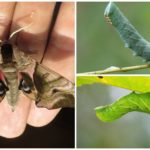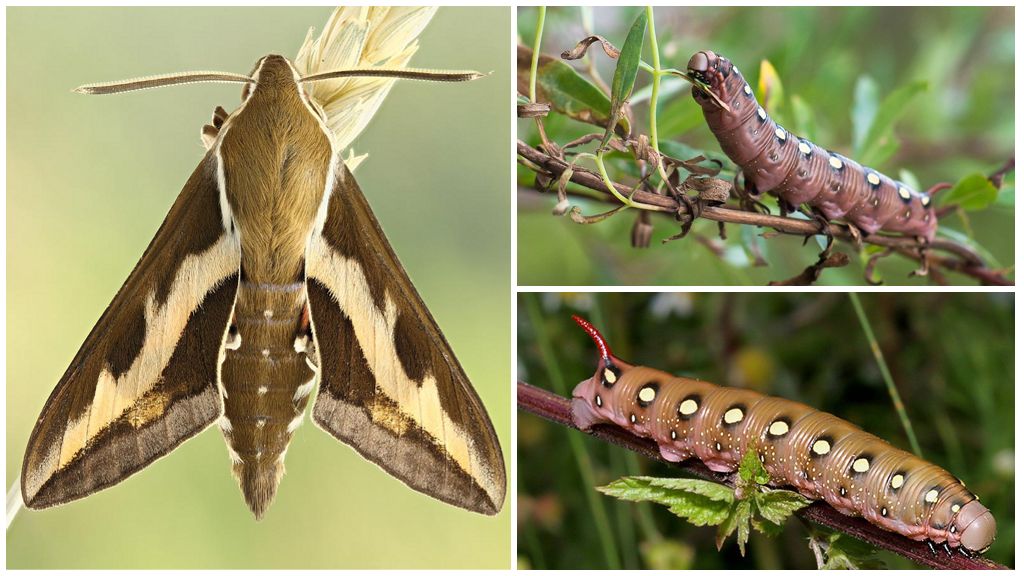Description and photo of caterpillar wine hawk moth
Content
- Offspring of bothering hawk
- Wine Hothouse Tracks
- Crested Caterpillars
Moths are lepidopteran insects with a full cycle of transformations: egg, larva, pupa and butterfly. Adult butterflies do not live long - only a few days, for which they need to have time to find a mate, mate and lay eggs on a fodder plant. After 3-4 days, the larvae - hawk caterpillar rolls out of eggs. Task caterpillars consists in the accumulation of nutrients for further development and transition to the next stage.
Interesting!
The caterpillar stage period is the most important and long lasting in the life cycle of the insect. In the afternoon, the hawk caterpillar freezes in one position, masking itself under the leaf. The caterpillar feeds at night, moving around the plant. For several weeks actively eats and increases in size. Some species reach 10 cm in length.
Variety of hawk moths
Insect hawk moth has a large variety of species, common in many regions of the mainland, including in Russia. Some of them have protective properties: they emit an unpleasant odor, have a bright warning color, and a pointed horn is formed at the end of the body. The most interesting and frequently encountered hawk moths are:
- morningstarch;
- medium and small wine;
- ocellar and others.
They are common in the middle belt of the country, in Western Siberia, the southern regions of the Krasnodar Territory, in the Crimea, in the Far East. In the photo of the hawk caterpillar you can distinguish the features inherent in each type of insect.
Offspring of bothering hawk
Insects have received the name thanks to a plant on which larvae live - a bed-bed. Also, they can be found on the boiling water and thrush. Distributed in almost the entire middle zone of Eurasia and North America.
The appearance of the bedstitch hawk is bright enough. Caterpillars are covered with yellow specks with a black border. Throughout the summer, they feed on the leaves, and by the autumn they descend to the upper layers of the soil, where they turn into a pupa. Until spring, they are in this phase, and with the onset of heat, an adult butterfly appears from the ground.
Wine Hothouse Tracks
One of the most beautiful insect species prefers the more southern regions of the continent, feeding on willowgrass, a bed-bed and grape leaves. The name "wine" was given to the pest because of its food preference - grapes. The second reason is a bright pink butterfly pattern, reminiscent of the color of the wine.
On a note!
Caterpillar wine hawk is different interesting shape and color. At the time of danger, she pulls in her head and inflates the chest part of the body, on the upper part of which two eye-like spots are depicted.Outwardly, the larva resembles a small snake with a large head. Such an unusual appearance can mislead the natural enemies of the pest.
Crested Caterpillars
This representative of insect pests feeds on foliage of poplar, aspen, bird cherry, willow. It is common in more northern regions of the continent: Siberia, Western Europe. Caterpillar color is in harmony with the environment. The body has a greenish tint with oblique stripes imitating the veins of a folded leaflet.
Another feature is small growths throughout the body. They can be a deterring weapon against predators.











